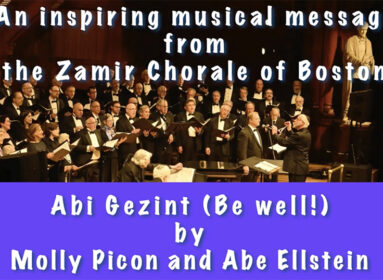
By Lucy Cohen Blatter
NEW YORK (JTA) — If there’s one story that sums up the changes afoot on the Lower East Side of Manhattan, a once heavily Jewish neighborhood, it’s the saga surrounding the Anshei Meseritz synagogue.
The Orthodox shul at 415 E. Sixth St. is a relic of a time when synagogues filled the neighborhood. But in recent years, faced with a shrinking membership, the congregation had been searching for a way to stay afloat.
Its salvation lay within its crumbling 100-year-old building.
While the Orthodox population in and around the Lower East Side has shrunk considerably, the value of the properties they own are skyrocketing. In order to make ends meet, many houses of worship (churches, too) are striking deals with developers.
At Anshei Meseritz, its saga began in 2008, when the Kushner Companies seemed prepared to demolish the structure and build a six-story building, with two floors reserved for the synagogue. The plan drew protests from preservationists and pitted synagogue members against one another. Eventually the building was saved from demolition — in 2012 it was designated part of a historic district, which meant the exterior had to remain intact.
But the congregation’s financial issues remained.
Enter East River Partners, a new developer with a plan that was something of a compromise: a hybrid synagogue-condo that preserves exterior details such as stained-glass windows and the original door, but is completely redone on the inside and with a new penthouse up top. When the building is completed in the next few months, the congregation, which has occupied the building since 1910, will return, taking the basement and ground-floor level. Atop the synagogue are three luxury condo apartments — two with original stained-glass windows — ranging in price from $2.95 million to $4.395 million. The developers have agreed to pay the congregation at least $20,000 annually for the next 198 years, in addition to a $600,000 payment up front and an $180,000 allowance to design and rebuild the sanctuary. The developer will keep profits from apartment sales.
“[Anshei Meseritz] is a terrific part of the history of Judaism in the city,” says Jody Kriss, president and co-founder of East River Partners. “It was important to the congregation and to the rabbi [who has since died], and a unique opportunity for us to keep the synagogue going.”
Such creative uses are often a win-win for the developer and the synagogue. But it’s not always smooth sailing.
The Young Israel of Manhattan on the Lower East Side had its 200-year-old building razed in 2010 to make way for a synagogue-condo hybrid. Its transaction coincided with the housing market collapse and the building never happened. An empty lot has stood in the spot for years, and the congregation has relocated to a nearby synagogue.
Like Kriss, developer Michael Bolla sees potential profit in keeping these buildings and their historical — and often beautiful — features somewhat intact. He estimates that about 20 percent of the people who moved into the old Forward building — actress Tatum O’Neal and an heir to the Versace fortune, among them — did so because of its historic significance.
Developers “don’t understand that these assets actually have more value when you restore them — they’re easier to sell than just boxes,” Bolla says. “There’s something to them that people have an emotional response to, and what sells real estate is emotion.”
The synagogue-to-condo conversion isn’t only occurring on the Lower East Side. Lincoln Square Synagogue, a beacon of modern Orthodoxy on the Upper West Side, moved 100 yards south to new digs after striking a deal with a developer, to swap 180 Amsterdam Ave. for 200 Amsterdam plus about $20 million to help finance the project.
Shaare Zedek, a traditional egalitarian synagogue on W. 93rd Street, is about to embark on its own construction project, which will see its 1923 building demolished to make way for a 14-story construction. The bottom three floors will be for the synagogue and the top floors for condos.
Congregation Shearith Israel, the oldest Jewish congregation in North America, is in the midst of replacing its community house, which is next door to its landmark synagogue building. That building was demolished last year to make way for new construction which, according to PBDW Architects’ website, will include a residential portion consisting of “three full floor apartments and a duplex incorporating the penthouse with views overlooking Central Park.” The new community space will include a banquet room, classrooms and study spaces, as well as a new entrance to the synagogue, making the entire facility wheelchair accessible.
“In today’s changing landscape, synagogues, churches and most all houses of worship are searching for new funding opportunities to support their operation and their mission,” says the synagogue’s executive director, Barbara Reiss, emphasizing, “Our core mission is not real estate investment,” it’s serving the Jewish people.”








 Southern New England Jewish Ledger
Southern New England Jewish Ledger












